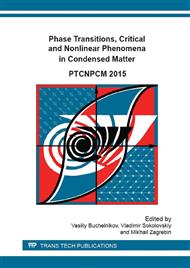p.215
p.219
p.224
p.231
p.235
p.239
p.243
p.247
p.251
Molecular and Crystalline Structure of Carbon Materials
Abstract:
Schemes of structural classification of carbon materials which are based on the types of chemical bonds formed in materials and the number of nearest neighbors with which each atom forms covalent bonds have been proposed. The classification schemes cannot only describe the known phases, but also are the methodological basis for the prediction of new phases and nanostructures. New phases can be obtained by linking, superpositioning or cutting of precursor structures.
Info:
Periodical:
Pages:
235-238
Citation:
Online since:
March 2016
Authors:
Keywords:
Price:
Сopyright:
© 2016 Trans Tech Publications Ltd. All Rights Reserved
Share:
Citation:


